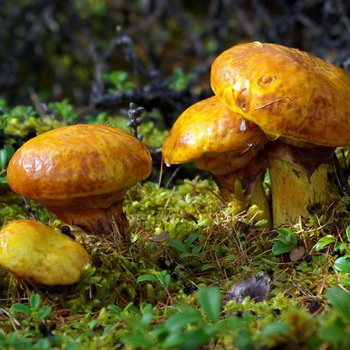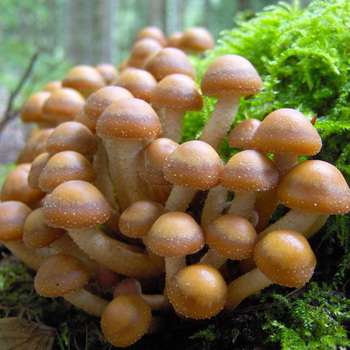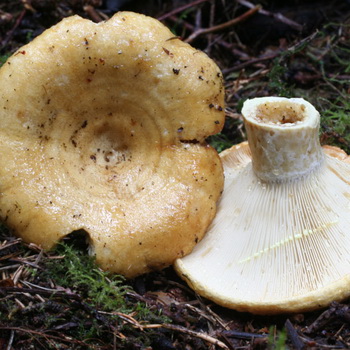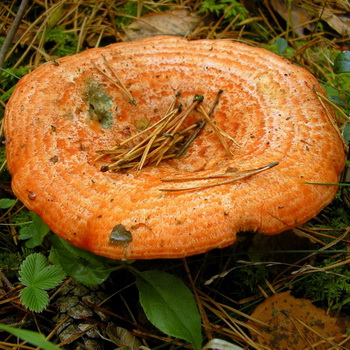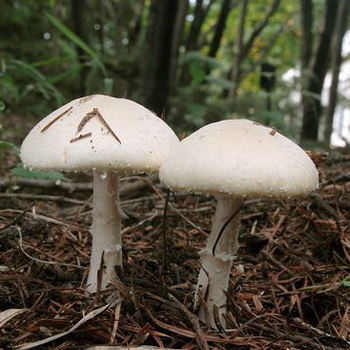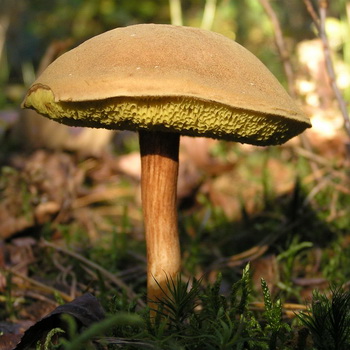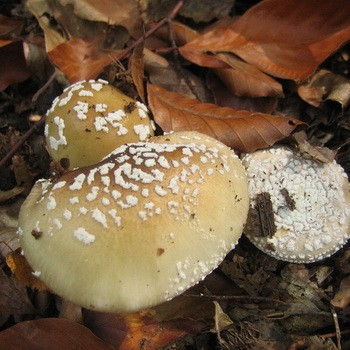Edible umbrella mushrooms: photo and description
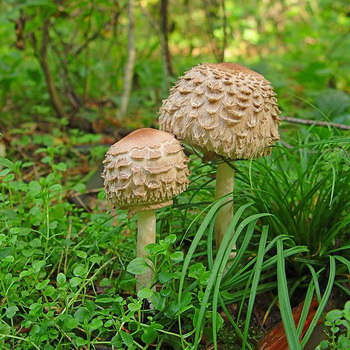
On this page, you can find out what umbrellas look like, where they grow and how to distinguish umbrellas from other mushrooms. You can also see photos and descriptions of mushrooms-umbrellas of various types (white, variegated and blushing).
Content
What does a white mushroom umbrella look like, photo of a mushroom
Category: edible.
Umbrella mushroom hat (Macrolepiota excoriata) (diameter 7-13 cm): usually grayish white, fleshy, with lagging scales, may be cream or light brown. In young mushrooms, it has the shape of an egg, with time it becomes almost flat, with a pronounced brown tubercle in the center.
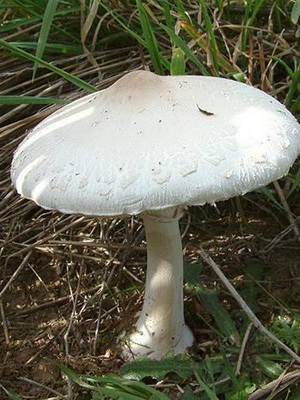
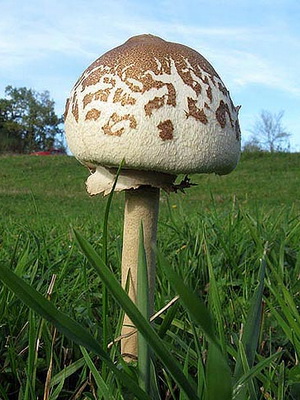
Pay attention to the photo of the white mushroom umbrella: the edges of his cap are covered with whitish fibers.
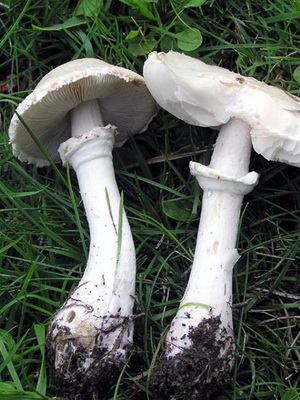
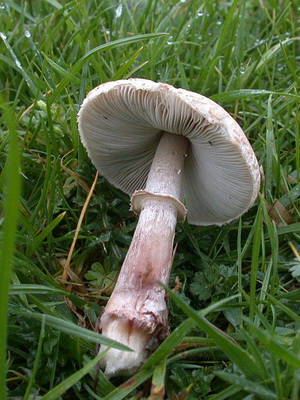
Leg (height 5-14 cm): hollow, has the shape of a cylinder. Usually a little curved, white, darker below the ring. It turns brown noticeably from touch.
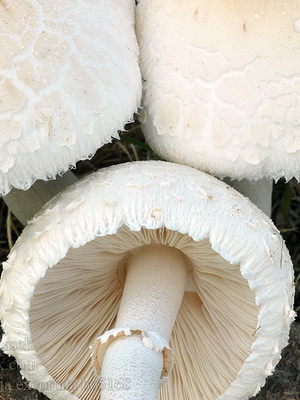
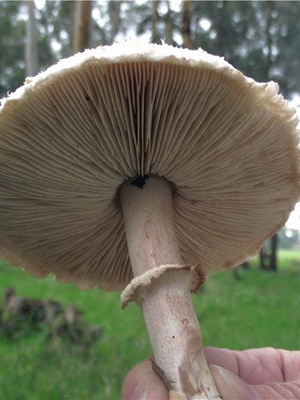
Records: white, very frequent and free. The old mushroom becomes brown or with a brown tint.

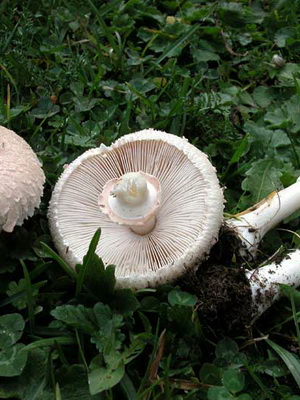
Pulp: white, with a pleasant intolerant smell. When interacting with air, the color on the cut does not change.
The white umbrella mushroom looks like a motley species (Macrolepiota procera), but it is much larger. Also, the white variety resembles a mastoid umbrella (Macrolepiota mastoidea), Conrad's umbrella mushroom (Macrolepiota konradii), and poisonous inedible lepota (Lepiota helveola). Conrad's appearance has a skin that does not completely cover the hat, a pointed hat near the mastoid umbrella, and a poisonous lepiot is not only much smaller, but also with flesh turning pink at the site of the break or cut.
When growing: from mid-June to early October in almost all countries of the Eurasian continent, as well as in North America, North Africa and Australia.
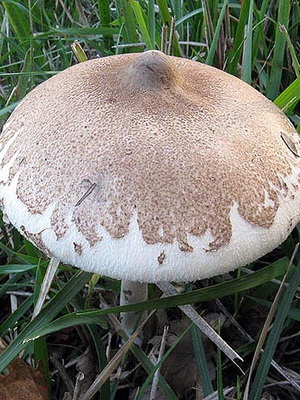
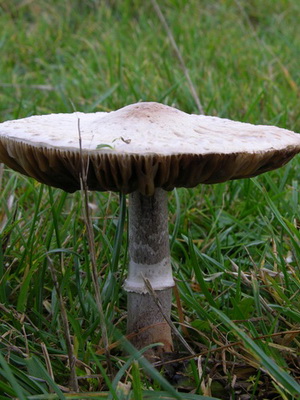
Where can I find: in relatively free areas of all types of forests - clearings, edges, pastures and meadows.
Eating: usually in combination with fish or meat dishes. In adult mushrooms, only hats should be taken, the legs are most often hollow or fibrous. A delicious mushroom, especially popular in traditional Chinese cuisine.
Application in traditional medicine (data not confirmed and not passed clinical trials!): as a remedy for rheumatism.
Other names: field mushroom umbrella.
Edible mushroom-umbrella blushing and his photo
Category: edible.
Blush umbrella mushroom hat (Chlorophyllum rhacodes) (diameter 7-22 cm): beige, gray or light brown, with fibrous scales. In young mushrooms, it has the shape of a small chicken egg, which then slowly straightens to a bell-shaped one, and after that it becomes almost flat, usually with tucked edges.
Leg (height 6-26 cm): very smooth, light brown or white, darkens over time.
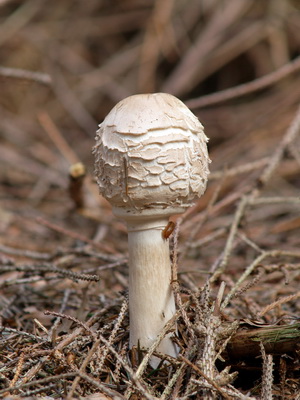
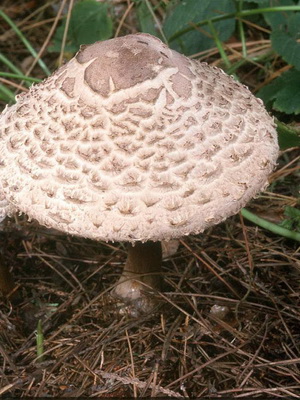
In the photo of the umbrella mushroom of this variety, it is clearly visible that the hollow, cylindrical shape of the leg narrows from bottom to top. Easy to detach from the hat.
Records: usually white or cream. When pressed, they become orange, pink or reddish.
Pulp: fibrous and brittle, white.
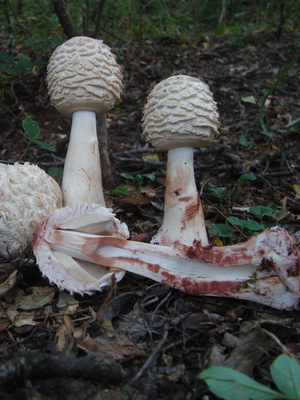
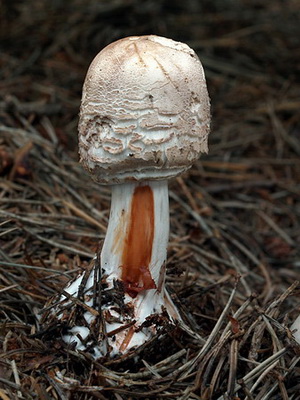
If you carefully look at the photo of the reddening umbrella mushroom, then on its slice you can see red-brown stains. This is especially noticeable in the pulp of the legs. It has a pleasant taste and aroma.
Doubles: girlish umbrella mushrooms (Leucoagaricus nympharum), elegant (Macrolepiota gracilenta) and variegated (Macrolepiota procera). The hat of the girl’s umbrella is lighter, and the color of its pulp practically does not change at the place of the break or slice. The graceful umbrella mushroom is smaller, the pulp also does not change color. The variegated umbrella is larger than blushing, and does not change the color of the pulp when interacting with air. The blushing umbrella mushroom also resembles the poisonous Chlorophyllum brunneum and lead-slag chlorophyllum (Chlorophyllum molybdites). But the first chlorophyllum can be distinguished from the reddening umbrella mushroom by the more brown color of the hat and legs, also by large scales on the hat, and lead-slag grows only in North America.
When growing: from mid-June to early November in European and Asian countries, as well as in North America and North Africa.
Where can I find: prefers fertile and humus-rich soils of deciduous forests. It is found in meadows, forest clearings or in city parks and squares.
Eating: in almost any form, only it is necessary to clean the mushroom from hard scales.
Application in traditional medicine: not applicable.
Important! According to scientists, a blushing umbrella mushroom can cause severe allergic reactions, so allergy sufferers should be careful when using it.
Other names: shaggy umbrella mushroom.
Variegated Mushroom Umbrella: photo and description
Category: edible.
Hat of motley umbrella mushroom (Macrolepiota procera) (diameter 15-38 cm): fibrous, gray or beige, with dark brown scales. In young mushrooms, it has the shape of a ball or a large chicken egg, then it opens to a cone, then it becomes like an umbrella.
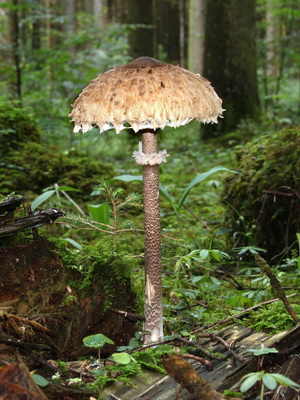
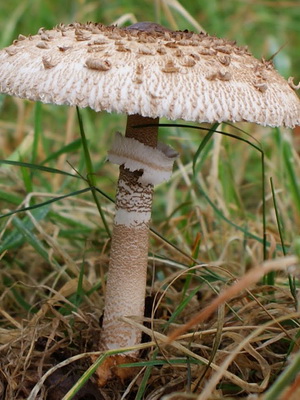
As can be seen in the photo of the motley umbrella mushroom, the edges of its cap are usually bent to the inside, and in the center there is a dark round tubercle.
Leg (height 10-35 cm): homogeneous, brown. Often with rings of scales, with a ring or remnants of a bedspread on a leg. Hollow and fibrous, has the shape of a cylinder and is easily detachable from the cap. A rounded thickening is noticeable at the very base.
Records: frequent and loose, white or light gray. Easy to detach from the hat.
Pulp: loose and white. It has a weak but pleasant mushroom aroma; it tastes like walnut or champignon.
According to the description, the motley umbrella fungus is similar to the poisonous chlorophylls - lead-slag (Chlorophyllum molybdites) and Chlorophyllum brunneum. Lead-slag is much smaller than the motley umbrella fungus and is found only in North America, and the flesh of Chlorophyllum brunneum changes color at the site of a slice or break. Also, the motley umbrella mushroom can be confused with an elegant edible umbrella (Macrolepiota gracilenta) and reddening (Chlorophyllum rhacodes). But graceful is much smaller, and blushing is not only smaller, but also changes the color of the pulp.
When growing: from mid-June to early November in temperate countries of the Eurasian continent, as well as in North and South America, Australia, in Cuba and Sri Lanka.
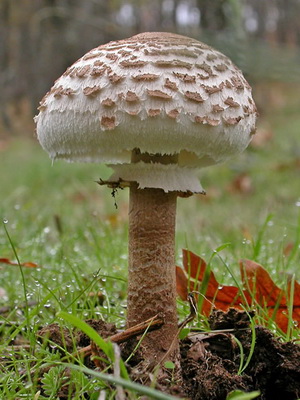
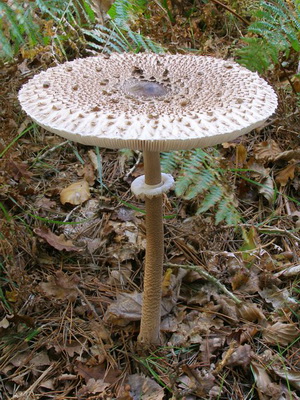
Where can I find: on sandy soils and open spaces, and not only in forest meadows or forest edges, but also in urban parks and squares.
Eating: after preliminary cleaning from the scales, the caps can be used in cooking in almost any form, including cheese. The legs are stiff, so they are not consumed. The motley umbrella resembles champignons to taste. It is especially appreciated by French gourmets who recommend frying it in oil with herbs. The only drawback is that this mushroom is very fried. In Italy, a motley umbrella is called mazza di tamburo ("drum sticks").
Application in traditional medicine (data not confirmed and not passed clinical trials!): in the form of a decoction as a tool in the treatment of rheumatism.
Other names: big umbrella mushroom, high umbrella mushroom, “drumsticks”.
